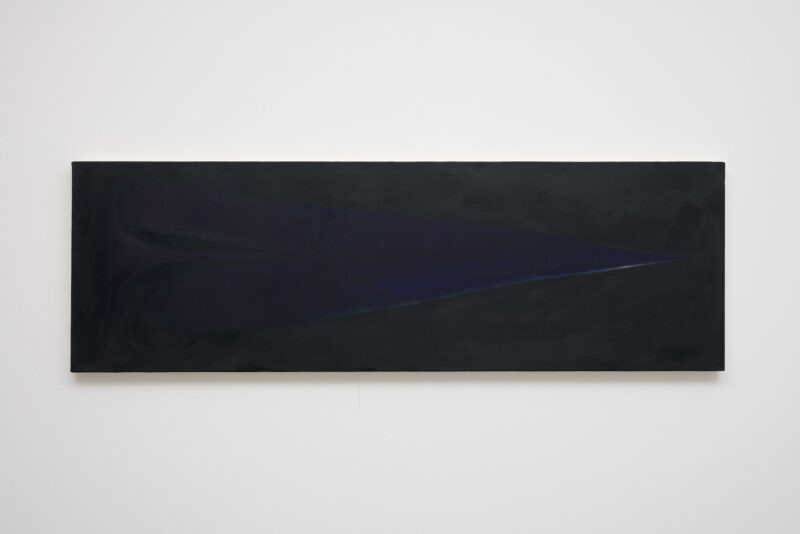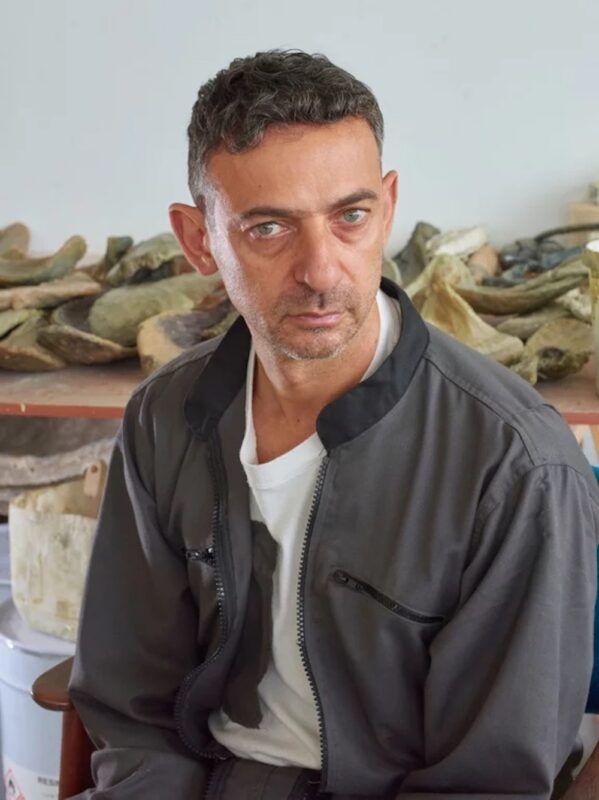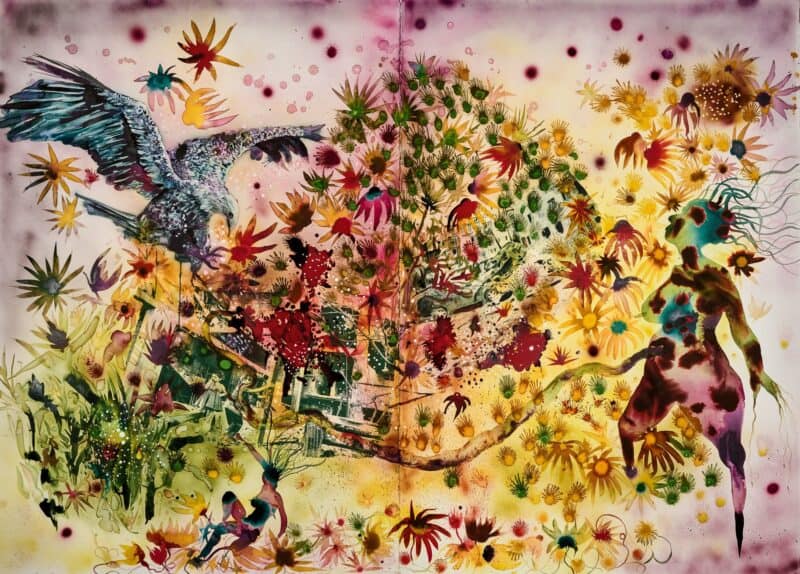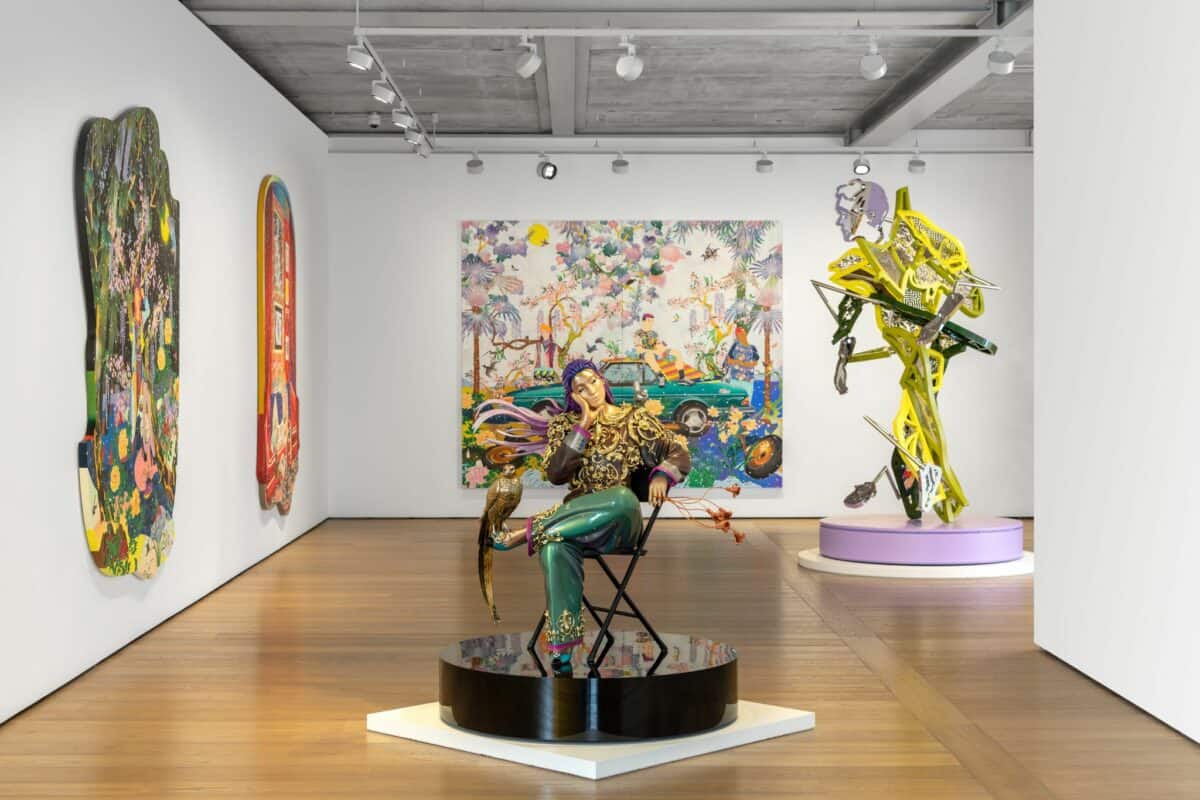
Almine Rech has opened Episodes Far From Home, the gallery’s first exhibition of work by New York-based Japanese artist Tomokazu Matsuyama. The exhibition is on view until 20th May 2023 at Almine Rech London.
If you could read a pattern like a page in a book, the intricate textiles and wallpapers in Tomokazu Matsuyama’s paintings would speak volumes. Colorful motifs crowd the dense, graphical surfaces of his works, forming garden vistas or intimate boudoirs. Their origins are eclectic: a luscious floral might be drawn from a print by 19th-century British designer William Morris or from an Edo Period kimono. In a bed of plants from divergent climes, an empty Sapporo bottle and a Starburst wrapper lie like the detritus of globalization.
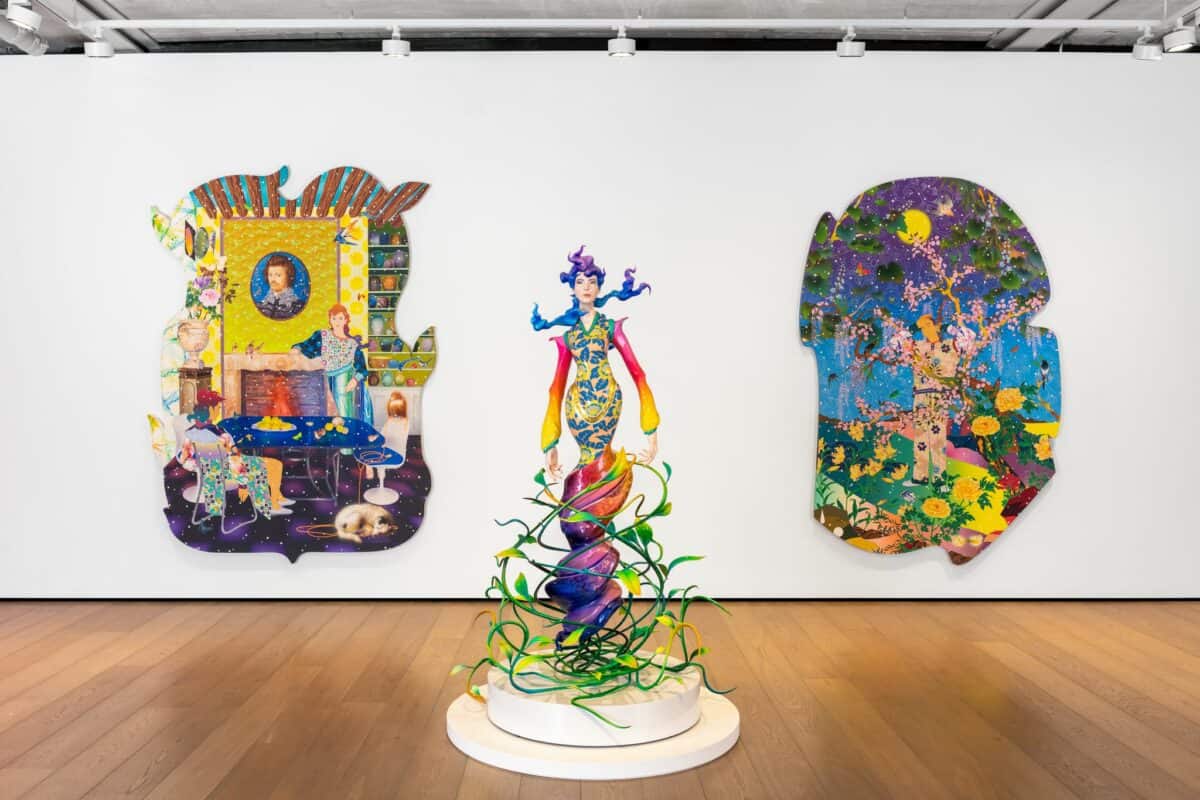
A portrait inspired by a photograph of French couturier Christian Dior, meanwhile, bears the golden flourishes of a counterfeit Hermes scarf that Matsuyama bought in New York’s garment district. Completed on dynamically shaped canvases, these paintings take their compositional cues from Grand Manner portraits or pastorals in the premodern European tradition, while their use of skewed perspectives and absence of shading recall the flat planes of Japanese woodblock prints known as ukiyo-e. Signifiers of East and West are willfully scrambled here, as are renditions of the ‘real’ and the ‘fake.’ In Matsuyama’s work, as with his own diasporic identity, such differences are shaky social constructions.

Matsuyama was born in Takayama, Japan and moved to New York in 2000 at age 25. In the Big Apple, he encountered the work of street artists like Keith Haring and enrolled at Pratt Institute to study graphic design. This may explain the graphic quality of his paintings – at least as much as the influence of the Japanese pictorial tradition. At the time, he had few venues to exhibit his self-taught work save the bare walls of industrial buildings along the Brooklyn waterfront, including in Greenpoint, where his studio remains today. The language of street art was stylistically formative, but it also shaped Matsuyama’s commitment to the public realm.
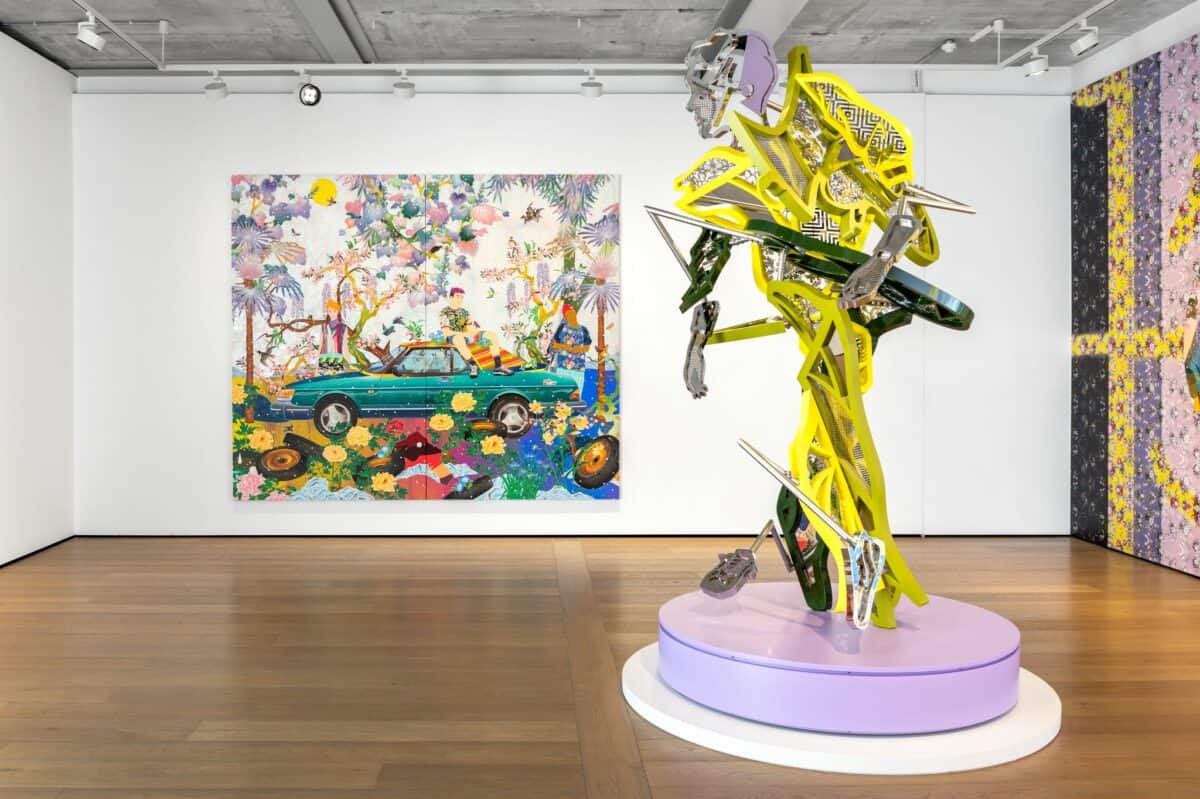
The 2000s were a time when Japanese art movements such as Simulationism and Superflat achieved global recognition, and Matsuyama was often confronted by the expectation that he deliver a recognizably anime-indebted style. Refusing to be reduced to cultural stereotypes, he chose instead to subvert them: the imagery in his work, then and now, filters influences from European and American art history through Japan and back again, so their origins can be difficult to pin down. Collaging elements from fashion and home décor magazines into compositions derived from the Western canon, he then adds layers of patterns from a wide range of sources – many of them drawn from his personal archive of historical textiles – that act as a kind of dazzle camouflage. Cloaked in these designs, his alluringly inexpressive figures withhold plenty of secrets.
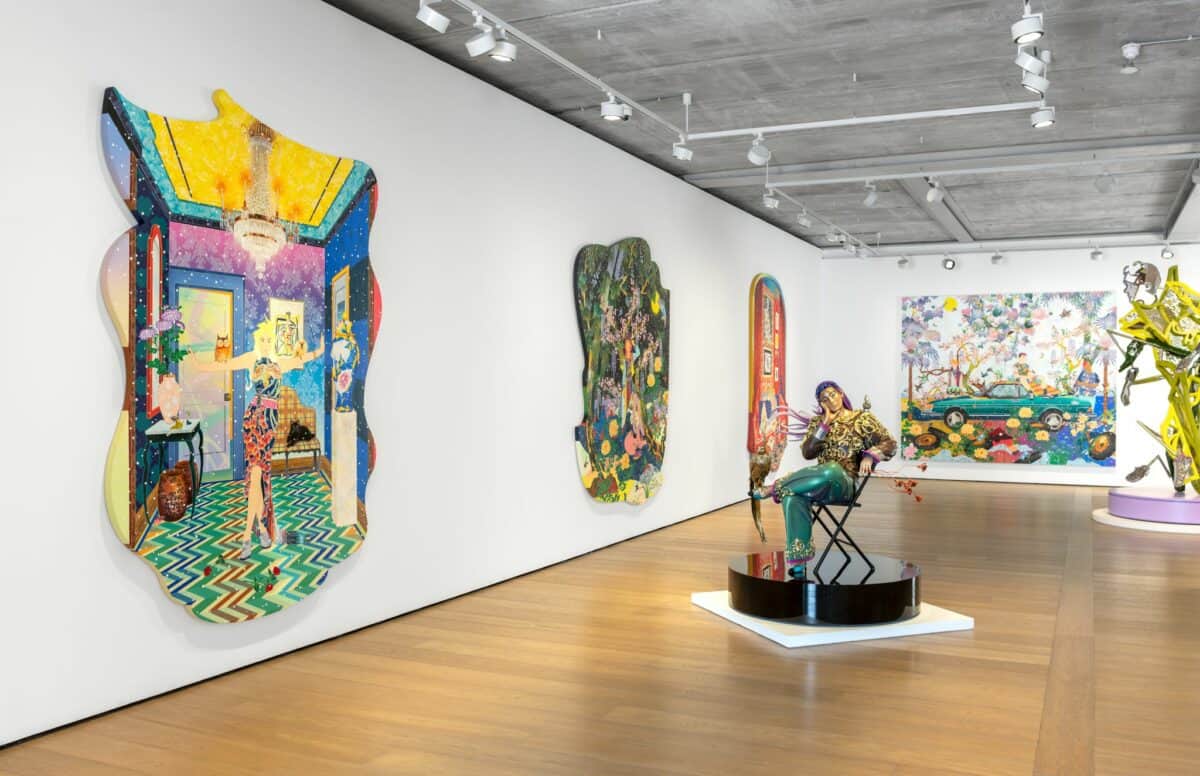
When it comes to patterns, hardened notions of ownership and appropriation have been obsolete since at least the 16th century, when Dutch traders brought wax prints to West Africa, Polynesia, and Japan. In our era of heightened international trade and digital information exchange, cultural sampling occurs at an ever-increasing rate. Matsuyama’s own dialogue between East and West recalls the transformational influence of ukiyo-e on European Impressionism by tracing their journey in reverse. The result is a syncretism that speaks to Matsuyama’s own trajectory as a global citizen and, in turn, embodies the postmodern condition. Words— Evan Moffitt, writer, editor and critic
Tomokazu Matsuyama, Episodes Far From Home, Until 20th May 2023, Almine Rech London
About the artist
Tomokazu Matsuyama (b. 1976, Japan) creates work that responds to his own bi-cultural experience of growing up between Japan and America by bringing together aspects of both Eastern and Western aesthetic systems.
His practice repositions traditional icons within a broader global context in order to create a distinctive style that resists cultural categorization and embodies what the artist refers to as the “struggle of reckoning the familiar local with the familiar global.” By raising questions of national and individual identity through the formal qualities and subject matter of his paintings, Matsuyama examines the “natural chaos” of our social environments and challenges viewers to confront their own conceptions of cultural homogeneity.
Matsuyama is influenced by a variety of subjects, including Japanese art from the Edo and Meiji eras, classical Greek and Roman statuary, French Renaissance painting, post-war contemporary art, and the visual language of global, popular culture as embodied by mass-produced commodities. Matsuyama currently lives and works in Brooklyn, New York. He received his MFA in Communications Design from the Pratt Institute, New York. Matsuyama’s important exhibitions include the Long Museums in both Shanghai and Chongqing, China; Hong Kong Contemporary Art (HOCA) Foundation, Hong Kong; Japan Society, New York, NY, USA; Harvard University, Cambridge, MA, USA; Katzen Arts Center at American University Museum, Washington, DC, USA; and Museum of Contemporary Art Museum, Sydney, Australia, among other galleries and institutions. Matsuyama’s works are in the permanent collections of LACMA, Los Angeles, CA, USA; Asian Art Museum, San Francisco, CA, USA; The Royal Family, Prince of Dubai, UAE; Bank of Sharjah Collection, Dubai, UAE; Microsoft Collection, and more.
